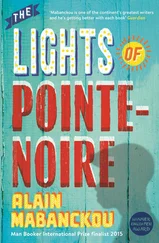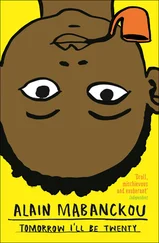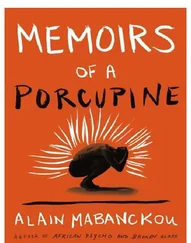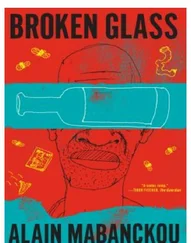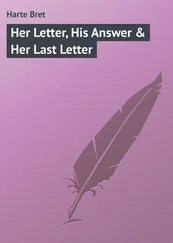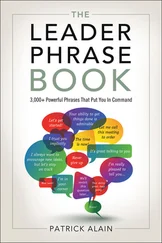2. the Harlem schoolboy and the Bible
I am still staring at your photo.
I blow on it lightly to remove the dust, but I do so with the hope that I will awaken the memories enclosed within it. I see a little black boy, a fragile boy, who is crossing the street to his public school while the world is facing the economic crisis of 1929. Wall Street is not far from where this photo was taken. History will always follow in your footsteps.
One person in this institution has an impact on you: Gertrude E. Ayer, the first woman of color to become a public school director in New York City. She reaches out to you, watches out for you, guides you. Gertrude appears in Go Tell It on the Mountain, encouraging the young John Grimes in his studies. However, another woman, a white woman, seems to have helped you, and toward her you display an ingratitude that is surprising, to say the least, as Benoît Depardieu seems to reproach: “Strangely, Orilla Miller, a young, white school-teacher, the other key figure in his elementary school years, remains eternally absent from his fiction. He makes reference to her in several of his essays, but she never appears in any of his novels or short stories in any form whatsoever. . She undertakes the literary, theatrical, and cinematic education of the young James Baldwin, and even went so far as meeting the Baldwin family. [. .] Orilla Miller played a particularly important role in shaping the way James understood whites and their world.” 27
It is Orilla Miller who puts on your first play. It is she who endures the wrath of your father when she wants to take you to the theater. But her persistence would win out over David Baldwin’s reluctance. She does not stop after the first victory. You visit museums with her, watch films together, share with her a passion for Charles Dickens. Orilla Miller almost becomes a member of your family, and you become a part of hers, where you discuss politics with her husband, Evan Winfield, which broadens your understanding of American society even further. You later admit that you realized, “Whites did not act as they did because they were white, but for other reasons.” 28These social meetings, which, according to Leeming, probably occur unbeknownst to David Baldwin, correct your view of the white world. From this point forward, your view of that world will be based on considering each person individually, and not on a systematic condemnation of an entire group of people. You refuse the simplistic syllogism: a white man kills a black man, and since Paul is white, Paul also kills black men.
Are all white people bad? Black Muslims are inclined to say yes.
Can whites and blacks intermarry? No, would again be the answer from Black Muslims.
And when, many years later, as an adult, you are invited to the home of the head of the Nation of Islam at the time, Elijah Muhammad, he will warn you of the “holocaust” awaiting the white world. This discourse of the black American Muslims brings up bitter memories for you. You cannot erase the looming figure of David Baldwin from your thoughts. You will feel more solidarity than ever with the “other side,” destined for Gehenna according to Elijah Muhammad: “I felt I was back in my father’s house — as indeed, in a way, I was — and I told Elijah I did not care if white and black people married, and that I had many white friends. I would have no choice, if it came to it, but to perish with them. .” 29
From time to time Orilla Miller comes to your house with her sister, Henrietta Miller. She discovers your poverty, the daily burdens and exhaustion of Emma Berdis Jones, who works like a dog in the kitchen, or in the corner doing the washing with her bare hands. Orilla is moved, and brings clothing for the children. Your admiration is complete: “I loved her, [. .] with a child’s love. . It is certainly partly because of her, who arrived in my terrifying life so soon, that I never really managed to hate white people. .” 30
This woman, who died in 1991, remained close to you until the end of your life.
•••
During your secondary school education, two other defining moments arise. They are crucial in your training as a writer. Indeed, when you begin school at the Frederick Douglass junior high school in 1935, you are first captivated by Countee Cullen. He is one of the most influential poets of the Harlem Renaissance. In this school, he teaches French and is also involved in the English department, where another teacher, Herman W. Porter, notices you. The latter is a member of the editorial board of the school’s literary journal, Douglass Pilot . He has read your essays, praises your talents, and celebrates the refined writing style of a child who is barely thirteen years old. He suggests that you work on the journal, for which you soon become one of the editors-in-chief.
At this time you read and admire two writers. Aside from Charles Dickens, there is Harriet Beecher Stowe, author of Uncle Tom’s Cabin . This woman of letters will be one of your primary focuses when you define your notion of literature in an article entitled, “Everybody’s Protest Novel,” in which you will formulate your first “attacks” against your mentor, Richard Wright.
•••
Entering DeWitt Clinton High School represents a drastic change for you: this public school located in the Bronx enjoys an impressive reputation. To get there, you have to cross all of Harlem, and must therefore take the subway. Still, these commutes take you away for a short while from the confinement of the ghetto. In high school, you meet other adolescents who share your passion for writing. As in your last school, this one also publishes a journal: The Magpie . Very quickly you publish articles in it alongside other friends, such as Emile Capouya, Sol Stein and Richard Avedon.
Your former teacher, Countee Cullen, is delighted, and is all the more so when you ask to interview him for the columns of this literary journal, known for having discovered several young American authors. It is Emile Capouya, the son of Spanish immigrants, who introduces you to someone who will become one of your closest friends: the painter Beauford Delaney. He lives in Greenwich Village, the site par excellence of artistic culture and bohemian life, on Manhattan’s west side. This neighborhood is also known to be a bastion of another culture that defies convention. The Oscar Wilde Bookshop, one of the oldest gay bookshops, for example, would be created here in Greenwich Village in 1967, while at the same time the neighborhood saw the birth of the famous disco group, the Village People. Through its spirit of difference, Greenwich Village becomes the symbol of sexual freedom, particularly for gay culture, starting with the riots that broke out after police attacks on homosexuals, transsexuals, and lesbians at the gay bar, Stonewall Inn, on June 28, 1969. Many use this date to mark the beginning of the struggle for gay rights.
And so, at your wit’s end from fighting with your father, you leave home at the age of seventeen — shortly after your break with the church — and you move to Greenwich Village.
•••
Meanwhile you continue to write more and more. You are sure that your moment has arrived, that it is time to cross the Rubicon. You have to publish in order to be known as an author. Publishers unfortunately reject all your works of fiction. You are not discouraged. As you wait, you decide to read, and to commit yourself to literary criticism. Several years later you collaborate with a photographer on a book about Harlem’s storefront churches. Although you receive a Rosenwald Fellowship, this work does not find a publisher, either. It is at this time that you begin to write book reviews, “. . mostly, as it turned out, about the Negro problem, concerning which the color of my skin made me automatically an expert. Did another book, in company with photographer Theodore Pelatowski, about the store-front churches in Harlem. This book met exactly the same fate as my first — fellowship, but no sale.” 31
Читать дальше


